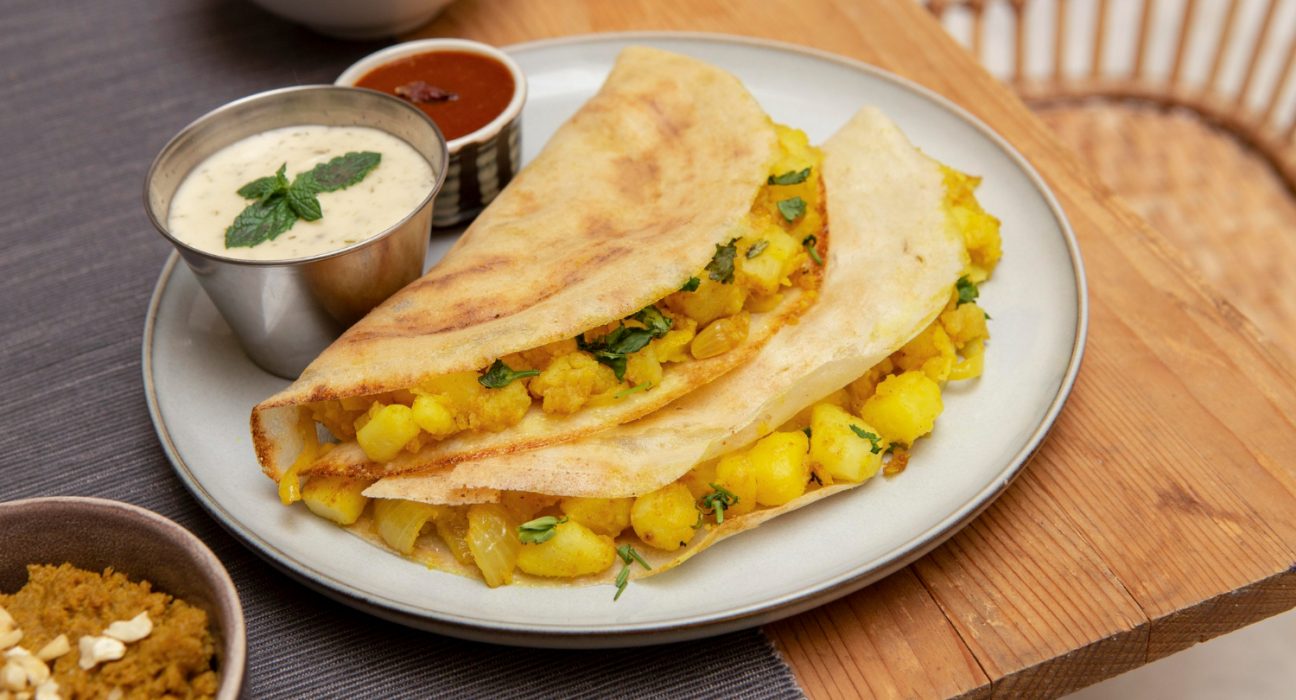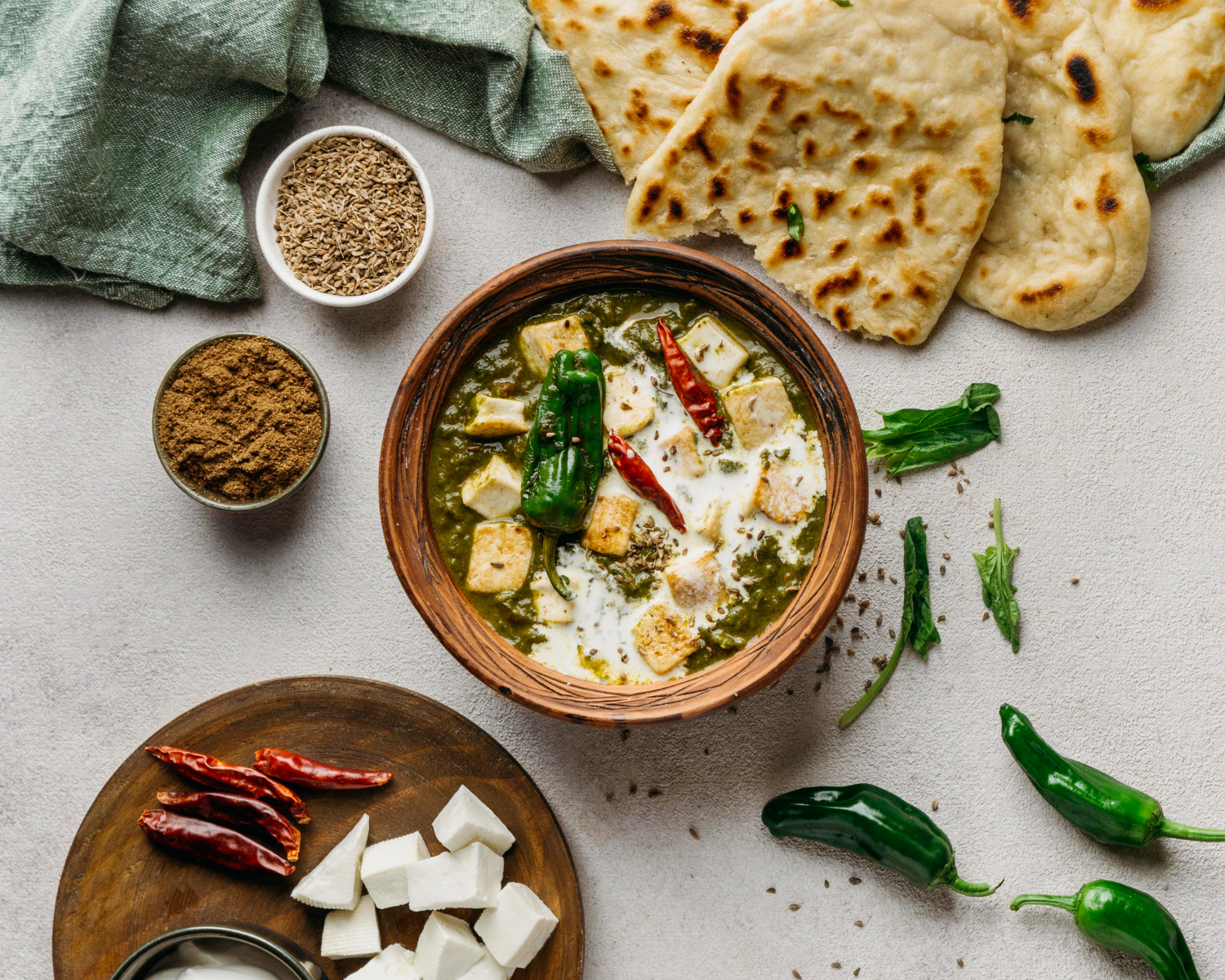Masala dosa is an iconic South Indian dish that combines a crispy dosa with a flavorful potato filling, served alongside tangy sambar and creamy coconut chutney. Whether you’re a fan of traditional Indian cuisine or exploring new flavors, this masala dosa recipe will guide you in creating restaurant-quality dosas at home. With the right techniques and ingredients like urad dal batter and tamarind, you can perfect this dish and enjoy a piece of South India in your kitchen.
What Makes Masala Dosa So Special?
The charm of masala dosa lies in its contrast of flavors and textures. The crispy dosa forms the perfect base for the soft and spiced potato filling. It’s naturally gluten-free and made with a fermented urad dal batter, offering both health benefits and bold flavors. The combination of chutney and sambar elevates every bite, making it a complete meal loved by all.
Ingredients for Masala Dosa Recipe
For the Dosa Batter
- 2 cups rice (preferably parboiled or dosa rice)
- ½ cup urad dal (split black gram)
- 1 tsp fenugreek seeds
- Cup water (for soaking and grinding)
- Salt to taste
For the Potato Masala Filling
- 4 medium-sized potatoes, boiled and peeled
- 1 large onion, thinly sliced
- 2 green chilies, slit lengthwise
- 1 tsp mustard seeds
- 1 tsp cumin seeds
- 1 tsp turmeric powder
- A handful of curry leaves
- 1 tbsp oil
- Salt to taste
- 1 tsp lemon juice (optional for tanginess)
For Coconut Chutney
- 1 cup grated fresh coconut
- 2 tbsp roasted chana dal (Bengal gram)
- 1 green chili
- 1 small piece of ginger
- Salt to taste
- Water (to adjust consistency)
For Sambar
- 1 cup toor dal (pigeon pea lentils)
- 1 tbsp tamarind pulp
- 1 medium-sized carrot, chopped
- 1 small drumstick, cut into pieces
- 1 tomato, diced
- 1 tsp turmeric powder
- 1 tbsp sambar powder
- 1 tsp mustard seeds
- 1 tsp cumin seeds
- A handful of curry leaves
- 2 dried red chilies
- 1 tbsp oil
- Salt to taste
Step-by-Step Instructions to Make Masala Dosa
Step 1: Preparing the Dosa Batter
- Soak Ingredients: Rinse the rice, urad dal, and fenugreek seeds separately. Soak them for at least 4–6 hours in water.
- Grind to a Smooth Paste: Grind the soaked rice and dal separately into a smooth batter, adding water gradually. Combine the batters, add salt, and mix well.
- Ferment: Allow the batter to ferment overnight or for 8–10 hours in a warm place. The batter should double in volume and develop a tangy aroma.
Step 2: Making the Potato Masala Filling
- Cook the Potatoes: Mash the boiled potatoes lightly and set aside.
- Prepare the Tadka (Tempering): Heat oil in a pan, add mustard seeds, and let them splutter. Add cumin seeds, curry leaves, and green chilies.
- Sauté Onions: Add sliced onions and cook until translucent.
- Add Spices and Potatoes: Stir in turmeric powder and salt. Then, add the mashed potatoes and mix well. Cook for 2–3 minutes and finish with a splash of lemon juice for tang.
Step 3: Preparing Coconut Chutney
- Blend Ingredients: Combine grated coconut, roasted chana dal, green chili, ginger, and salt in a blender. Add water gradually to achieve a smooth consistency.
- Optional Tadka: Temper mustard seeds, curry leaves, and dried red chilies in oil and pour over the chutney.
Step 4: Cooking the Sambar
- Cook the Lentils: Rinse the toor dal and pressure cook with water and turmeric until soft. Mash the cooked dal.
- Prepare Vegetables: Cook carrots, drumsticks, and tomatoes with tamarind pulp and sambar powder in a pot.
- Combine and Simmer: Add the mashed dal to the vegetable mixture. Adjust the consistency with water and let it simmer for 10 minutes.
- Add Tadka: In a separate pan, heat oil and temper mustard seeds, cumin seeds, dried red chilies, and curry leaves. Pour this over the sambar.
Step 5: Cooking the Dosa
- Heat the Pan: Use a non-stick or cast-iron pan and heat it on medium flame. Lightly grease it with oil.
- Spread the Batter: Pour a ladle of batter onto the center of the pan and use the back of the ladle to spread it thin in a circular motion. Cook the side of the dosa until golden brown and crispy.
- Add Filling: Place a spoonful of the potato masala in the center, fold the dosa, and serve hot.
Serving Suggestions
Plate your masala dosa with a side of sambar, coconut chutney, and perhaps a dollop of spiced podi with ghee. For an authentic touch, serve it with a piping-hot cup of filter coffee.
Tips for Perfect Masala Dosa
- Crispy Dosa: Ensure the batter is well-fermented and thinly spread for crispiness.
- Pan Heat: Keep the pan at medium heat for even cooking. If the batter sticks, wipe the pan lightly with a damp cloth between dosas.
- Versatile Fillings: Experiment with variations like paneer, cheese, or mixed vegetables for a modern twist.
- Step-by-Step Photos: Documenting each stage will help if you’re sharing the recipe with friends or family!
Nutritional Information (Per Serving: 2 Dosas with Chutney and Sambar)
- Calories: 400–450 kcal
- Protein: 10–12 grams
- Carbohydrates: 55–60 grams
- Fat: 10–12 grams
- Fiber: 6–8 grams
Why Masala Dosa is Loved Worldwide
The appeal of masala dosa lies in its balance of health benefits and flavors. The fermented batter aids digestion, while the spiced filling and accompaniments make it an explosion of taste. It’s perfect for breakfast, lunch, or dinner and brings the spirit of South India to your table.
Masala dosa is more than just a dish; it’s a cultural experience. With this masala dosa recipe, you’ll master the art of making crispy dosas paired with delicious chutneys and sambar. So, roll up your sleeves, follow these steps, and bring the taste of South India to your home!






